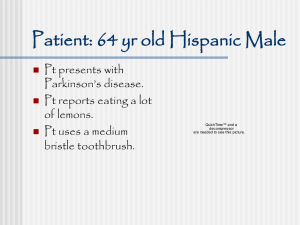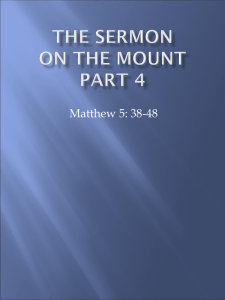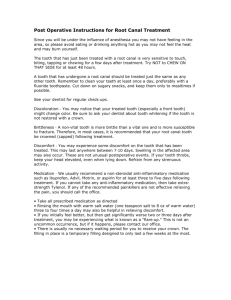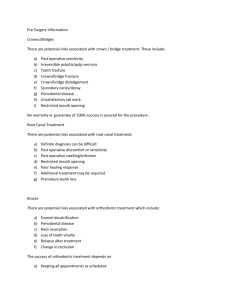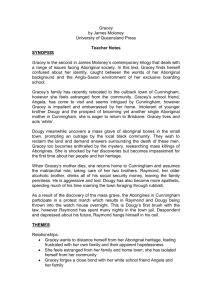Instrument Test
advertisement
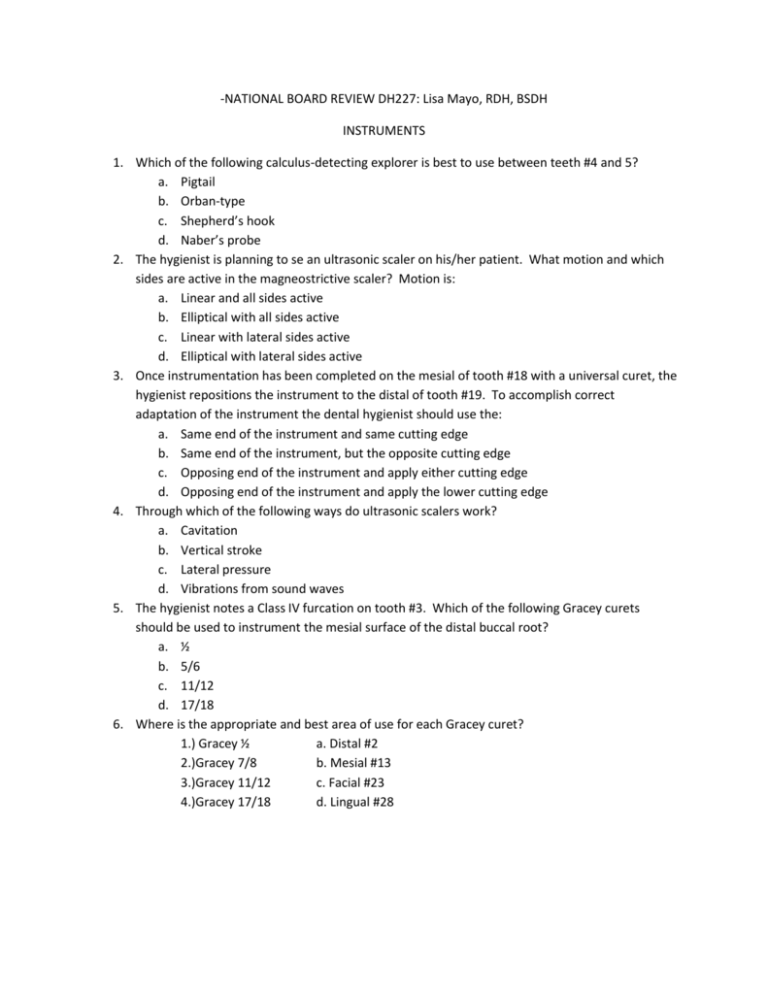
-NATIONAL BOARD REVIEW DH227: Lisa Mayo, RDH, BSDH INSTRUMENTS 1. Which of the following calculus-detecting explorer is best to use between teeth #4 and 5? a. Pigtail b. Orban-type c. Shepherd’s hook d. Naber’s probe 2. The hygienist is planning to se an ultrasonic scaler on his/her patient. What motion and which sides are active in the magneostrictive scaler? Motion is: a. Linear and all sides active b. Elliptical with all sides active c. Linear with lateral sides active d. Elliptical with lateral sides active 3. Once instrumentation has been completed on the mesial of tooth #18 with a universal curet, the hygienist repositions the instrument to the distal of tooth #19. To accomplish correct adaptation of the instrument the dental hygienist should use the: a. Same end of the instrument and same cutting edge b. Same end of the instrument, but the opposite cutting edge c. Opposing end of the instrument and apply either cutting edge d. Opposing end of the instrument and apply the lower cutting edge 4. Through which of the following ways do ultrasonic scalers work? a. Cavitation b. Vertical stroke c. Lateral pressure d. Vibrations from sound waves 5. The hygienist notes a Class IV furcation on tooth #3. Which of the following Gracey curets should be used to instrument the mesial surface of the distal buccal root? a. ½ b. 5/6 c. 11/12 d. 17/18 6. Where is the appropriate and best area of use for each Gracey curet? 1.) Gracey ½ a. Distal #2 2.)Gracey 7/8 b. Mesial #13 3.)Gracey 11/12 c. Facial #23 4.)Gracey 17/18 d. Lingual #28 7. Which cutting edge is used to debride the MF of #30 during instrumentation with the universal curet? a. The same cutting edge on the same working end as used for the distal b. The opposite cutting edge on the same working end as used for the distal c. The same cutting edge on the same working end as used for the ML d. The opposite cutting edge on the same working end as used for the ML 8. What must occur in order to gain proper adaptation during instrumentation? a. The wrist and forearm must move as one working unit b. The instrument must be rolled between the finger and the thumb c. The pad of the side of the middle finger must be placed near the shank of the instrument d. The terminal shank of the instrument must always be parallel to the occlusal surface of the tooth 9. What working stroke is being used when the face of the blade is perpendicular to the long axis of the tooth during instrumentation? a. Vertical b. Oblique c. Circumfrential d. Multidirectional 10. What medical condition(s) contraindicate the use of the air polisher and/or the ultrasonic scalers? a. Asthma b. Diabetes c. Bronchitis d. Emphysema e. A&C f. A,C,D 11. Which 3 of the following are NOT contraindicated for use of the air polisher? a. Asthma b. Diabetes c. Thyroid disorder d. Cardiac pacemaker 12. At what angle should the blade be when inserting a curet into the sulcus? a. 0° b. 15° c. 60° d. 90° 13. What is the landmark to initiate the root planning stroke? a. CEJ b. Base of the junctional epithelium c. Coronal edge of marginal gingiva d. Coronal edge of the junctional epithelium 14. All of the following create heat during polishing EXCEPT one. a. Dry agent b. Slow speed c. Heavy pressure d. Use of toothpaste 15. A dental hygienist is using a dental mirror to reflect light from the lingual surface through the tooth while it is being examined on the buccal surface. The dental mirror is being used for the purpose of: a. Indirect vision b. Illumination c. Transillumination d. Retraction 16. Which instrument grasp would you use during an assessment stroke to determine if calculus is still present subgingivally? a. Firm b. Light c. A&B d. None of the above 17. When removing calculus deposits from the distal of tooth #30, you pull away from the tissue with plenty of pressure. This stroke is known as: a. Exploratory stroke b. Light stroke c. Working stroke d. Firm stroke 18. You are about to scale the distal of tooth #16 and decide that you would like to stabilize your hand and the instrument. The ideal fulcrum is termed: a. Scaling rest b. Intraoral finger rest c. Extraoral finger rest d. None of the above 19. When using a probe to measure pocket depth, the measurement is taken from the: a. Base of the pocket to the CEJ b. Free gingival margin to the CEJ c. Junctional epithelium to the margin of the free gingiva d. Base of the pocket to the mucogingival junction 20. How should a periodontal probe be inserted into the sulcus? a. Perpendicular to the long axis of the tooth b. With a firm pushing motion c. With a short oblique stroke d. Parallel to the tooth surface 21. _____ is the term for the relationship between the instrument and the surface of the tooth or soft tissue. a. Angulation b. Adaptation c. Curettage d. Scaling and root planing 22. It is impossible to carry out periodontal procedures efficiently with dull instruments. A sharp instrument cuts more precisely and quickly than a dull instruments. a. Both statements are TRUE b. Both statements are FALSE c. The first statement is TRUE, the second is FALSE d. The first statement is FALSE, the second is TRUE 23. The major difference between the design of a scaler and a curette is in the: a. Length of the shank b. Diameter of the handle c. Shape of the blade d. Bend of the shank 24. A curette designed to scale and root plane anterior teeth with deep pockets will have a: a. Short, straight shank b. Long, straight shank c. Short, angled shank d. Long, angled shank 25. Which of the following is the instrument of choice for removing deep subgingival calculus, root planning altered cementum, and removing the soft tissue lining the periodontal pocket? a. Curette b. Sickle scaler c. Hoe d. File 26. Which of the following instruments would be the best choice for removing subgingival calculus from the mesial surface of tooth #15? a. Gracey ½ b. Gracey 7/8 c. Gracey 11/12 d. Gracey 13/14 27. You are having trouble reaching the buccal of tooth #16 to remove a calculus deposit due to the proximity of the coronoid process. Which is the instrument of choice to crush the calculus deposit? a. Ultrasonic scaler b. Gracey 15/16 c. Periodontal fie d. H6/7 scaler 28. Air used to deflect the free gingival margin in order to detect: a. Supragingival calculus b. The CEJ c. Smooth root surfaces d. Subgingival calculus e. Inflammation 29. Which of the following instruments would be the best choice for removing subgingival calculus from the mesial surface of tooth #15? a. Gracey ½ b. Gracey 7/8 c. Gracey 11/12 d. Gracey 13/14 30. Which of the following instruments is the instrument of choice for removing deep subgingival calculus, root planning altered cementum, and removing the soft tissue lining the periodontal pocket? a. Curette b. Sickle scaler c. Hoe d. File 31. You are going to the dispensary to pick up instruments for your periodontal maintenance patient. The chart states that he has 2 implants #30,31. Which will you specifically need to ask for in order to treat these sites? a. Gold plated scaling instruments b. Stainless steel scaling instruments c. Ultrasonic scalers d. Plastic scaling instruments 32. You are seeing a patient for gross debridement due to heavy calculus buildups. The patient has easily displaced gingival tissue and generalized spacing. Which of the following is the best to debride the mandibular anterior facial supragingival deposits? a. Hoe b. Chisel c. Periodontal file d. H 6/7 scaler 33. Water is used as a lubricant when sharping instruments with: a. Natural stones b. Artificial stones c. Both natural and artificial stones 34. When sharpening a wire edge is produced: a. Only when using a coarse artificial stone b. When using a mounted ruby stone only c. When no oil is used for lubrication of the stone d. When the last stroke of the stone is drawn away from the cutting edge 35. A patient complains to the hygienist that it feels like she is being more forceful at theis maintenance appointment. The hygienist realizes that she hasn’t sharpened her instruments in a while. For efficient and effective root planning and scaling, it is essential that curetts and hand scalers are sharpened: a. Every 6-9 months b. Correctly and frequently c. Once a year d. When you notice that you are destroying the patient’s tissues 36. Ultrasonic instrumentation is accomplished with a: a. Heavy touch and light pressure, keeping the tip perpendicular to the tooth surface and constantly in motion b. Light touch and heavy pressure, keeping the tip parallel to the tooth surface and stationary c. Light touch and light pressure, keeping the tip parallel to the tooth surface and constantly in motion d. Heavy touch and heavy pressure, keeping the tip perpendicular to the tooth surface and stationary 37. The term for vibrating water bubbles which collapse and create pressure to clean and debride teeth is known as: a. Vibration b. Cavitation c. Lavage 38. In magnetostrictive ultrasonic units the pattern of vibration of the tip is linear. In piezoelectric ultrasonic units the pattern of vibration of the tip is elliptic. a. The first statement is TRUE, the second is FALSE b. The first statement is FALSE, the second is TRUE c. Both statements are FALSE d. Both statements are TRUE 39. Ultrasonic scaling devises should NOT be used in final root planning because: a. They damage the periodontal tissues b. The tips of these devises are too dull c. They leave irregular root surface d. The overheat the root surface 40. A patient experiences sensitivity while being scaled with an ultrasonic scaling devise. Which of the following actions would be inappropriate to counter this problem? Select al that apply. a. Proceeding to another tooth and then returning to the sensitive tooth later in the appointment b. Moving the instrument slower c. Making necessary adjustments to the water spray d. Turning up the power of the devise e. Using less pressure 41. While scaling subgingivally the tip of the curette breaks off. All of the following are appropriate actions to take to try and remove this tip EXCEPT one. a. Place the patient in an upright position b. Gently examine the gingival sulcus c. Take a periapical xray of the area d. Use a push stroke to force the tip out of the sulcus 42. Which of the following is the most common error when performing periodontal probing? a. Using the wrong type of probe b. Incorrectly reading the probe c. Excessively angling the probe when inserting it interproximally beyond the long axis of the tooth d. Forgetting to also probe the lingual of every tooth 43. How should a periodontal probe be adapted in an interproximal area? a. It should be parallel to the long axis of the tooth at the point angle b. It should be parallel to the long axis of the tooth at the contact area c. It should touch the contact area and the tip should angle slightly beneath and beyond the contact area d. It should be perpendicular to the long axis of the tooth in front of the contact area 44. ______ are used on line angles or deep pockets that cannot be negotiated with other strokes. a. Vertical strokes b. Oblique strokes c. Horizontal strokes d. Circular strokes 45. When using the universal curette to move from the buccal surface of a tooth to the interprox, you are keenly aware of how talented your maneuvering is. You otice that your thumb, index, and middle finger tips are all resting on the handle of the curette. This grasp is known as: a. Pen grasp b. Modified pen grasp c. Palm-thumb grasp d. Palm grasp 46. Which instrument grasp is not used with scaling, root planning and gingival curettage instruments when using a chisel scaler in a push stroke to remove gross calculus? a. Modified pen grasp b. Pen grasp c. Palm grasp d. Palm-thumb grasp 47. Which instruments are designed primarily for the removal of supragingival calculus? a. Gracey curettes b. Sickle scalers c. Universal curettes d. Hoes ANSWERS 1.A 2.B 3.B 4.A 5.B 6. 1)C 2)D 3)B 4)A 7.B 8.B 9.A 10.F 11.B,C,D 12.A 13.D 14.B 15.C 16.B 17.C 18.B 19.C 20.D 21.B 22.A 23.C 24.B 25.A 26.C 27.C 28.D 29.C 30.A 31.D 32.A 33.B 34.D 35.B 36.C 37.B 38.C 39.C 40.B,D 41.D 42.C 43.C 44.C 45.B 46.C 47.B




